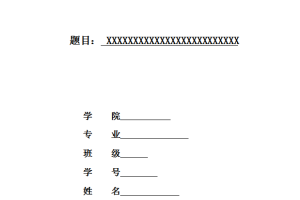中国的餐桌礼仪源远流长。随着我国对外开放的不断深入,了解国外尤其是西方的餐桌礼仪,有重要的现实意义。本文首先介绍了中国的餐桌礼仪和西方的餐桌礼仪,然后对其进行了比较分析,最后从文化的角度找出了餐桌礼仪存在差异的原因。
中西餐桌礼仪有不少的相似和不同之处,了解西方餐桌礼仪对中国文明的发展和在国外生存有很大的帮助。我们要在餐桌上表现出良好的素质。因此,学习和研究餐桌礼仪是我们当代大学生的任务,也成为我们提高自身素质的必要条件。
Abstract
China is a nation of etiquette, whose table manners have a long history. In fact, western countries have their own peculiar dining custom. Knowing our table manners can make us polite in the public, and knowing western dining customs can let us integrate into world preferably.Firstly, this paper introduces the Chinese table manners and western table manners. Secondly, we have a comparative analysis of the table manners. Thirdly, we find out the reasons for the differences of table manners from a cultural perspective.
There are a lot of similarities and differences between Chinese and western table manners. Learning about the western table manners not only has a great help to the development of Chinese civilization, but also is helpful for us to communicate with the foreigners. We should show the good quality at the dinner table. Therefore, learning and researching the table manners is the main task of the contemporary college students, and also become the necessary condition to improve our own quality.
Key words: table manners, cultural difference, China and western countries
Contents
摘 要…………………………………………………………………………………………………………… 1
关键词…………………………………………………………………………………………………………… 1
Abstract………………………………………………………………………………………………………….. 2
Key words………………………………………………………………………………………………………. 2
1.1 The history of table manners in China…………………………………………………………. 4
1.2 Some taboos of table manners in China. 4
2.1 The origin of table manners in western countries…………………………………………… 5
2.2 The education of table manners in western countries……………………………………… 6
3.1 Arrangement for seats…………………………………………………………………………….. 6
3.2 The order of serving dishes………………………………………………………………………. 8
3.3 Tableware…………………………………………………………………………………………….. 9
3.4 The way of showing that the dinner is finished……………………………………………. 12
4.1 The different cultural connotations……………………………………………………………. 13
4.2 The different ways of thinking…………………………………………………………………. 13
4.3 The different values………………………………………………………………………………. 14
4.4 The different time concepts…………………………………………………………………….. 15
4.5 The different notion………………………………………………………………………………. 15
4.6 The different behaviors regulation……………………………………………………………. 15
References……………………………………………….. 17





